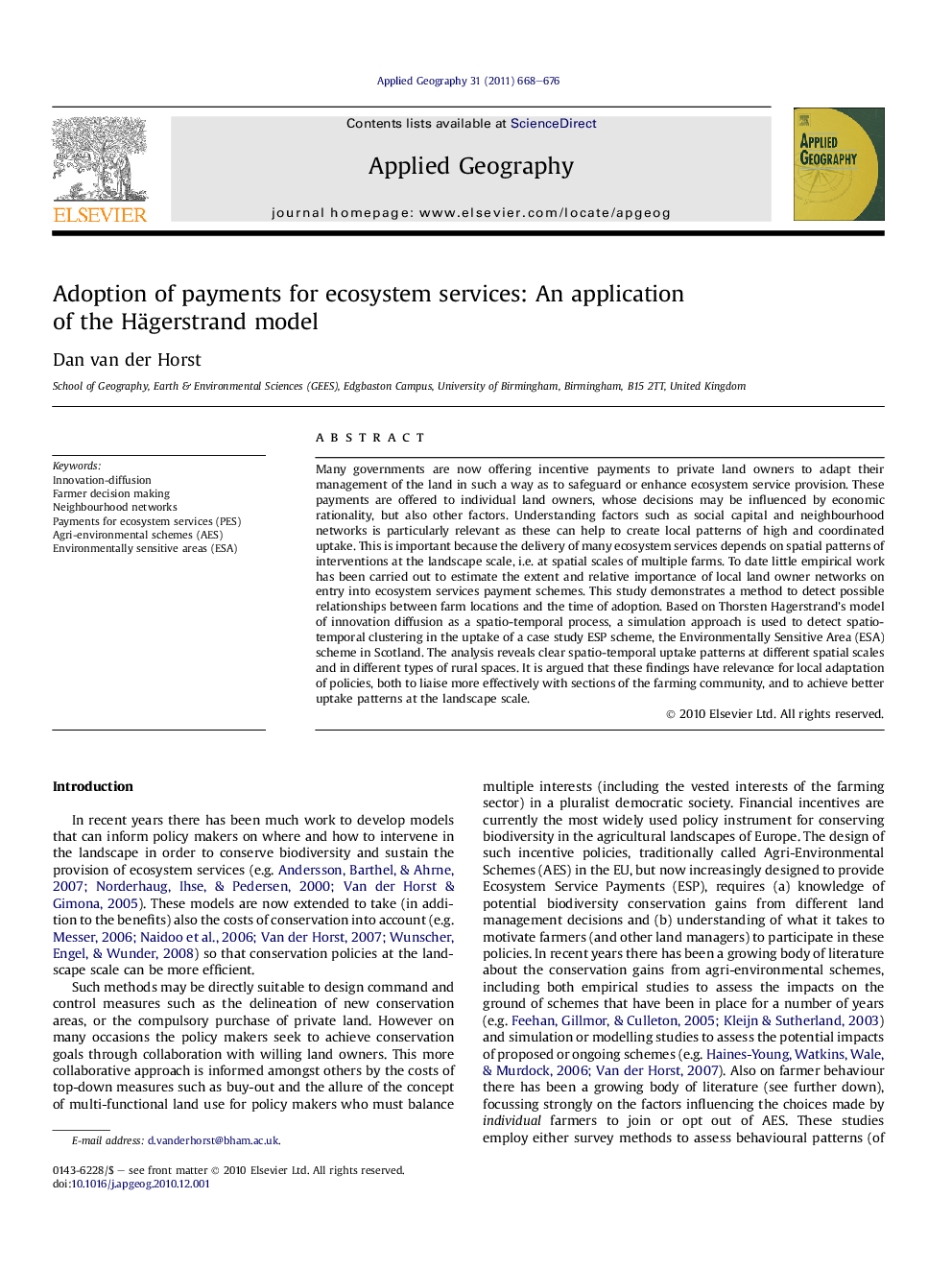| کد مقاله | کد نشریه | سال انتشار | مقاله انگلیسی | نسخه تمام متن |
|---|---|---|---|---|
| 83776 | 158738 | 2011 | 9 صفحه PDF | دانلود رایگان |

Many governments are now offering incentive payments to private land owners to adapt their management of the land in such a way as to safeguard or enhance ecosystem service provision. These payments are offered to individual land owners, whose decisions may be influenced by economic rationality, but also other factors. Understanding factors such as social capital and neighbourhood networks is particularly relevant as these can help to create local patterns of high and coordinated uptake. This is important because the delivery of many ecosystem services depends on spatial patterns of interventions at the landscape scale, i.e. at spatial scales of multiple farms. To date little empirical work has been carried out to estimate the extent and relative importance of local land owner networks on entry into ecosystem services payment schemes. This study demonstrates a method to detect possible relationships between farm locations and the time of adoption. Based on Thorsten Hagerstrand’s model of innovation diffusion as a spatio-temporal process, a simulation approach is used to detect spatio-temporal clustering in the uptake of a case study ESP scheme, the Environmentally Sensitive Area (ESA) scheme in Scotland. The analysis reveals clear spatio-temporal uptake patterns at different spatial scales and in different types of rural spaces. It is argued that these findings have relevance for local adaptation of policies, both to liaise more effectively with sections of the farming community, and to achieve better uptake patterns at the landscape scale.
Research highlights
► This paper presents a novel use of the classical Hägerstrand model in contemporary natural resource management.
► It is a suitable tool to examine the spatio-temporal pattern of uptake of voluntary land management schemes/payments to land managers for delivering ecosystem services.
► These patterns are important because many ecosystem services require landscape scale policy interventions, yet policies traditionally target only individual farmers (thus delivering field scale or farm scale interventions).
► These patterns are also important because they provide a proxy indicator for (the strength of) existing neighbourhood networks, through which policies can be communicated more effectively and farmers can be enticed to join more quickly (thus making the policy more efficient).
► Case study application identifies spatio-temporal patterns of uptake in different parts of Scotland. Much stronger patterns are found in mountainous areas and on small islands, which is consistent with the expectation of stronger communities of place and neighbourhood networks in more remote places.
Journal: Applied Geography - Volume 31, Issue 2, April 2011, Pages 668–676